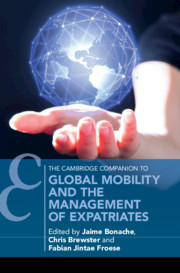Book contents
- Global Mobility and the Management of Expatriates
- Cambridge Companions to Management
- Global Mobility and the Management of Expatriates
- Copyright page
- Contents
- Figures
- Tables
- Contributors
- 1 Global Mobility
- Part I The Expatriation Process of Corporate Expatriates
- Part II Different Types of Expatriates and Stakeholders
- 7 Short-term Assignees, International Business Travellers, and International Commuters
- 8 Self-initiated Expatriates
- 9 Skilled Migrant Careers
- 10 Women and Global Mobility
- 11 Global Families
- 12 Roles and Challenges for Global Mobility Departments
- Index
- References
8 - Self-initiated Expatriates
from Part II - Different Types of Expatriates and Stakeholders
Published online by Cambridge University Press: 12 November 2020
- Global Mobility and the Management of Expatriates
- Cambridge Companions to Management
- Global Mobility and the Management of Expatriates
- Copyright page
- Contents
- Figures
- Tables
- Contributors
- 1 Global Mobility
- Part I The Expatriation Process of Corporate Expatriates
- Part II Different Types of Expatriates and Stakeholders
- 7 Short-term Assignees, International Business Travellers, and International Commuters
- 8 Self-initiated Expatriates
- 9 Skilled Migrant Careers
- 10 Women and Global Mobility
- 11 Global Families
- 12 Roles and Challenges for Global Mobility Departments
- Index
- References
Summary
Self-initiated expatriates (SIEs) are an important group of the globally mobile workforce. In contrast to assigned expatriates (AEs), SIEs relocate on their own volition and without company support. In recent years, the literature on SIEs has started to burgeon leading to an enhanced knowledge of SIEs. The purpose of this chapter is to first review and summarize central findings in the nascent body of research concerned with SIEs. In this regard, we focus on the following key areas of inquiry: definitions of SIEs, their (demographic) profiles, main motivations to relocate, cross-cultural adjustment, as well as career experiences, and outcomes of self-initiated expatriation. In second step, based on our overview of the extant literatures, we outline directions for future research on SIEs in each key area. The suggested future research avenues will be helpful to guide the next generation of studies on SIEs and to move this stream of research ahead.
Keywords
- Type
- Chapter
- Information
- Global Mobility and the Management of Expatriates , pp. 181 - 203Publisher: Cambridge University PressPrint publication year: 2020
References
- 2
- Cited by



